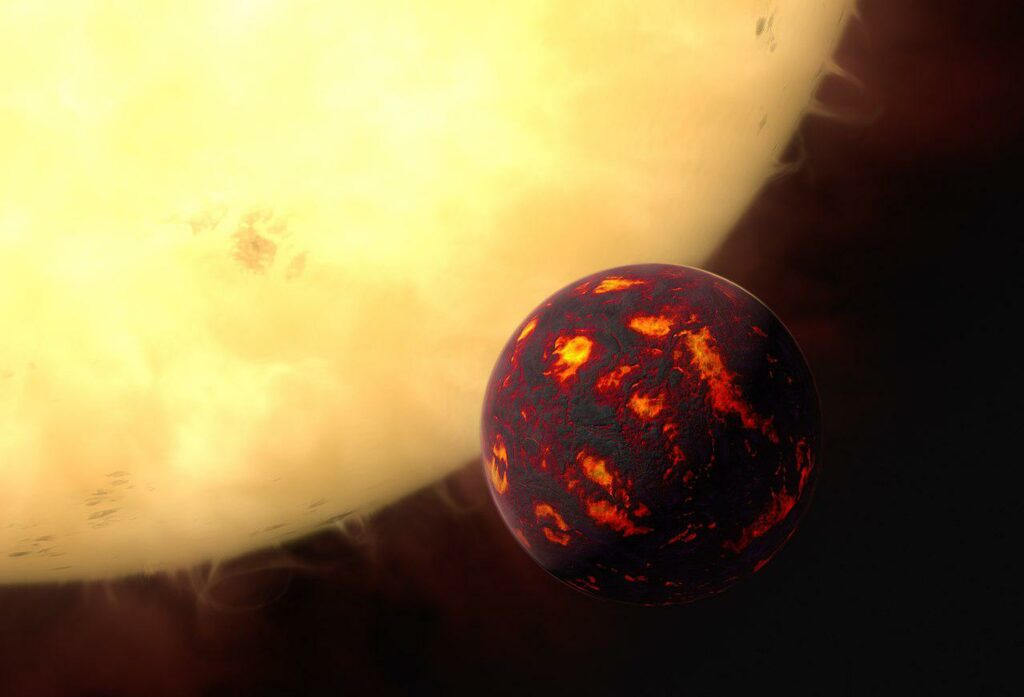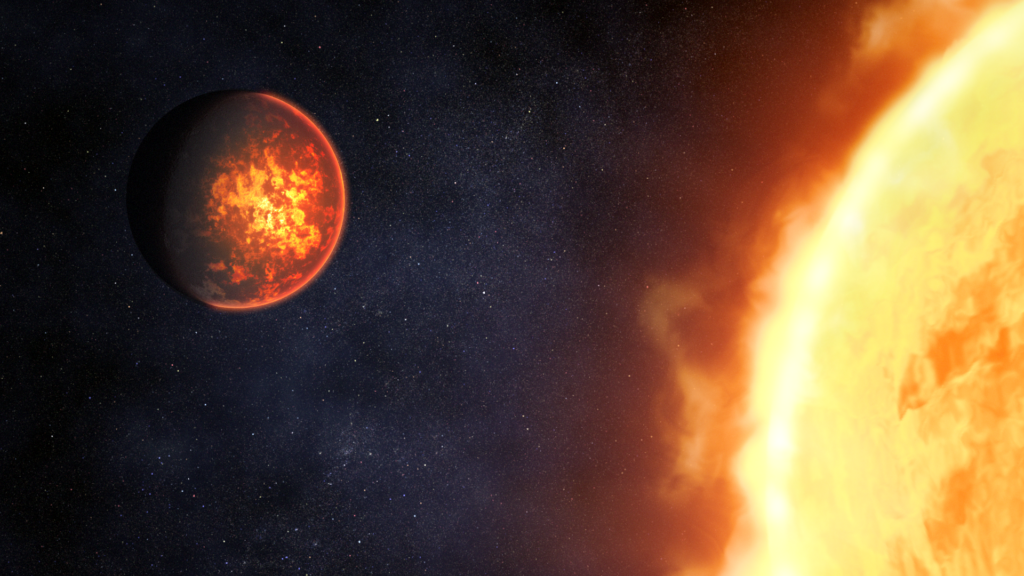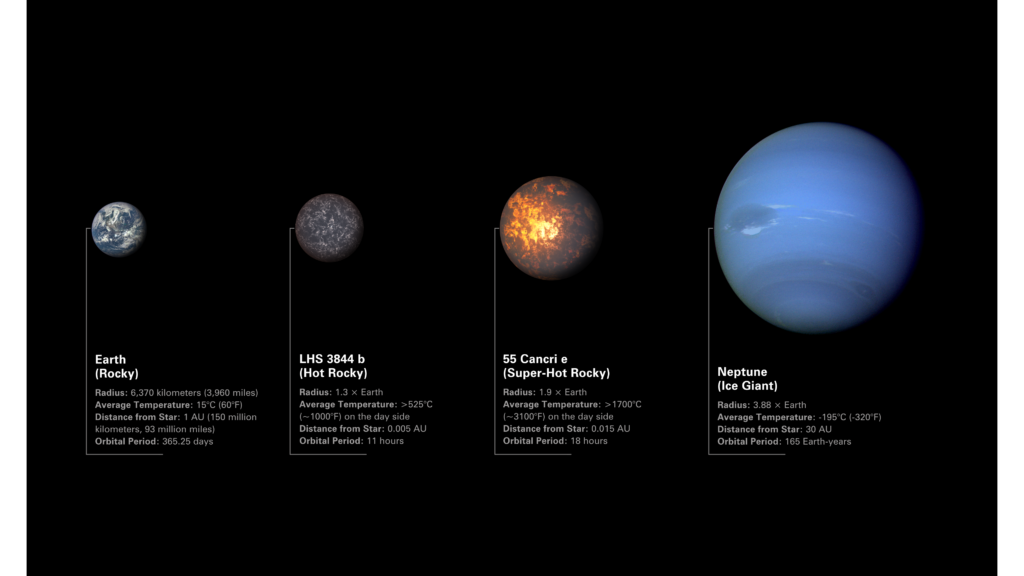NASA has named exoplanets that will be the first targets for the James Webb Space Telescope (JWST). The researchers chose the lava world 55 Cancri e and the atmosphere-free super-earth LHS 3844 b.
Lava exoplanet 55 Cancri e
55 Cancri e is 40 light-years away from us. It orbits a sun-like star, which is part of a binary system. This is a super-earth: a stone body, 1.8 times larger in radius than our planet, and 8 times larger in mass. The orbit of 55 Cancri e passes at a distance of 0.0154 AU (2.3 million km) from the surface of the central luminary. With a high degree of probability, it is in tidal capture and is constantly turned to the star by the same side.

Thanks to the Spitzer space telescope, astronomers were able to measure the temperature of the illuminated hemisphere of the exoplanet. It turns out that it reaches 2300 °C. Most likely, the day side of this celestial body is completely covered by an ocean of lava. On the night side it is a little “cooler”: its temperature is +1400 °C.
At the same time, the hottest point 55 Cancri e is not located at all in the center of the illuminated hemisphere, but is displaced, and the amount of heat emitted by it varies. According to one version, this is due to the fact that the exoplanet has a dense atmosphere. According to another, in fact, 55 Cancri e is not in tidal capture, but an orbital resonance like that that exists on Mercury (in two Mercurian years, the planet makes three revolutions around its axis).

In the last case, there may be cycles of day and night on the 55 Cancri e. In turn, this means the probability that the rocks evaporating from the lava ocean will condense in the evening and fall to the surface again in the form of a stone rain.
During the observations, JWST will have to establish whether 55 Cancri e has an atmosphere and determine its chemical composition. In turn, this will help to find out which of the two described scenarios is closer to reality.
Hot Super Earth LHS 3844 b
LHS 3844 b orbits a red dwarf located 48 light-years from Earth. Its radius exceeds the radius of our planet by 1.3 times.
Astronomers are interested in this world because of its extreme proximity to its home star. The orbit of LHS 3844 b passes at a distance of 900 thousand km from the red dwarf (this is only 2.3 times the distance between the Earth and the Moon). LHS 3844 b has no substantial atmosphere and is always turned towards the star with the same side. According to astronomers, its temperature can reach 770 °C.

The combination of these factors makes it possible to directly observe the flow of infrared radiation emanating from the illuminated hemisphere of LHS 3844 b, which in turn makes it possible to conduct its chemical analysis. In the course of previous observations, astronomers have already managed to establish that the surface of LHS 3844 b has a small albedo comparable to the albedo of Mercury and the Moon.
Thanks to its more advanced tools, JWST will be able to take the next step: to study the spectrum of the super-earth and determine the chemical composition of its surface. In addition, if there is volcanic activity on LHS 3844 b, the orbiting observatory will have to determine the presence of volcanic gases in its spectrum.
According to https://www.nasa.gov
Follow us on Twitter to get the most interesting space news in time
https://twitter.com/ust_magazine
